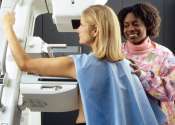Screening detects ovarian cancer using neighboring cells
Pioneering biophotonics technology developed at Northwestern University is the first screening method to detect the early presence of ovarian cancer in humans by examining cells easily brushed from the neighboring cervix ...
Apr 22, 2013
0
0






